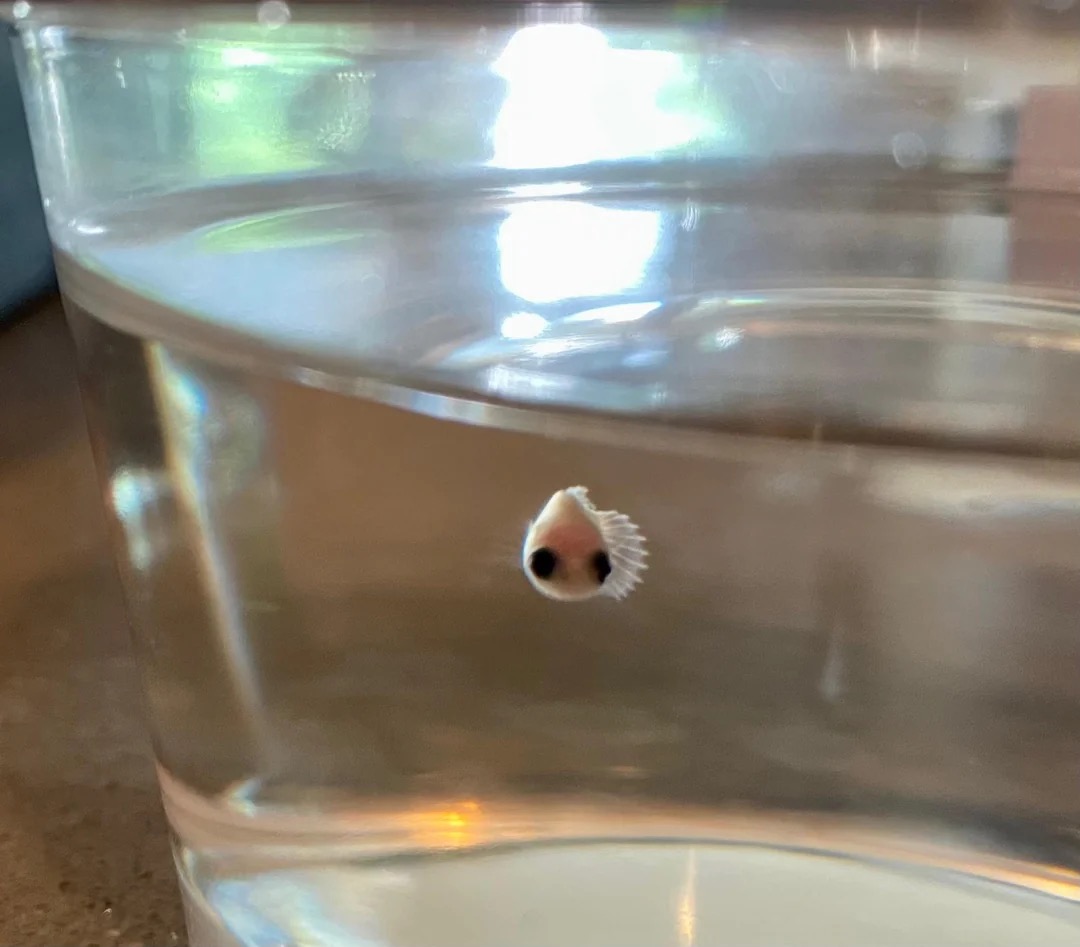Caring for Baby Betta Fish
Welcoming a baby betta fish into your home is an exciting experience. These tiny, vibrant creatures bring joy and wonder to any space. However, raising baby bettas, or fry, requires special attention and care compared to their adult counterparts. If you have a younger betta, we have articles that talk about betta fish eggs, and betta fry care as well.
For now let’s explore the essential aspects of baby betta care to help you ensure your little swimmers thrive and grow into beautiful, healthy adults.

Creating the Perfect Water World
Just like us, baby bettas are sensitive to their environment. Providing them with the right water conditions is crucial for their health and happiness.
- Temperature is Key: Imagine being in a room that’s too hot or too cold—uncomfortable, right? Baby bettas feel the same way about their water. Aim for a temperature between 76-84°F, with 80°F being ideal. Warmer water helps boost their metabolism and strengthens their immune system, reducing stress and the risk of diseases.
- Pristine Water Conditions: Baby bettas are more delicate than adults and require pristine water conditions. Think of it like a nursery for human babies—cleanliness is paramount! Frequent water changes are essential, especially if you have multiple babies in one tank, as they can stress each other and hinder growth. Use a gentle sponge filter to keep the water clean and clear to avoid harming them with strong currents.
Fueling Growth with the Right Diet
Just like human babies, baby bettas need plenty of nutritious food to grow big and strong.
- Frequent Feedings: Baby bettas have higher caloric needs than adults, so they must eat more often. Aim for 2-3 small daily feedings to support their rapid growth and development.
- A Varied and Nutritious Menu: A diverse diet ensures your baby betta gets all the necessary nutrients. Give a mix of live or frozen foods like bloodworms, brine shrimp, daphnia, and tubifex worms. These are packed with protein and essential nutrients. You can also supplement with small pellets (0.5 mm) for small fish. Brands like New Life Spectrum and Fluval Bug Bites are great options. Avoid larger pellets or flake foods, as these can be difficult to digest.
- Feeding Guidelines: A good rule of thumb is to feed your baby betta until you see a slight bulge in its belly. This indicates that it is adequately fed. If the bulge remains after feeding, consider reducing the amount of food in the next feeding.
Providing a Safe and Comfortable Home
Creating a cozy and secure environment is essential for your baby betta’s well-being.
- Tank Size Matters: While baby bettas are small, they still need adequate space to swim and explore. A tank of at least 1 gallon is recommended. Smaller tanks can restrict their growth and lead to health problems. It’s also best to house them alone or with their siblings to minimize stress from aggression.
- Creating a Cozy Environment: Make your baby betta feel at home by adding hiding spots and soft decorations to their tank. Avoid sharp objects that could injure their delicate fins. Live or silk plants can provide both shelter and visual enrichment.
Additional Tips for Success
- Be Observant: Keep a close eye on your baby betta’s behavior and eating habits. Any changes could indicate stress or health issues. If you notice anything unusual, don’t hesitate to seek advice from a veterinarian or experienced betta fish keeper.
- Avoid Overcrowding: If you’re keeping multiple baby bettas together, ensure enough space for everyone. Overcrowding can lead to stress, aggression, and competition for food.

